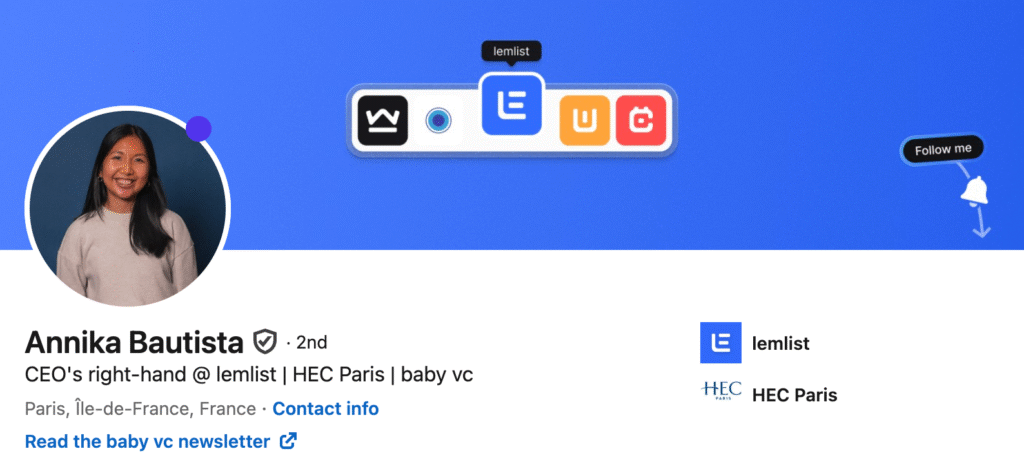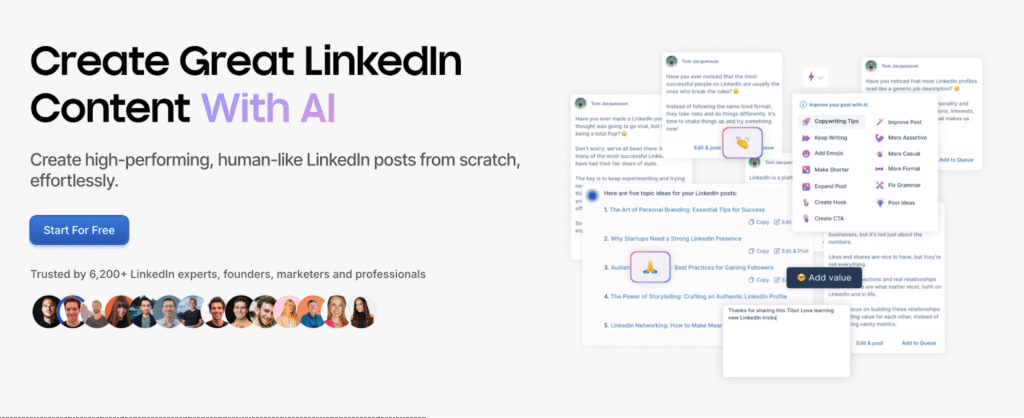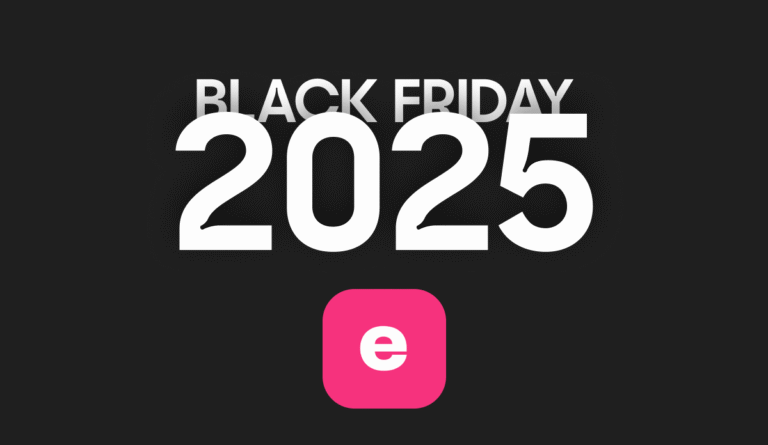5 years ago, my LinkedIn profile looked fine on paper. I had a decent headline, a photo I liked, and a filled-out “About” section. But my views were flat. My search appearances were barely moving. Recruiters, prospects? Silent.
It turns out “fine” wasn’t enough anymore. LinkedIn has 1.1 billion members in 2025, and the algorithm has changed. Organic reach is down 22%. Comments count twice as much as likes. And only “All-Star” profiles, those 100% complete, are 40x more likely to get opportunities.
When I finally decided to dig into my analytics and fix what mattered, the results surprised me. In three weeks, my search appearances jumped from 25 to 240. The difference? Small, intentional changes that spoke the language of LinkedIn’s search and its algorithm.
In this guide, I’m going to share the exact LinkedIn profile optimization tips I used and the quick wins you can apply in 15 minutes, the deeper changes that make you stand out, and the simple habits that keep your profile visible month after month.
Why is your LinkedIn profile not getting more views?
The LinkedIn Reality Check: Why 99% of Profiles Fail
I used to think my profile was “good enough” because it was filled out and had a professional photo. The truth? Most profiles on LinkedIn don’t even pass the platform’s own definition of “complete.” And incomplete profiles rarely get seen.
LinkedIn’s own data shows that only “All-Star” profiles, the ones with every section filled in, are 40x more likely to receive opportunities. On top of that, the way people interact with content has shifted. Average post reach has dropped 22% in the past year.
The algorithm now weighs comments twice as much as likes when deciding what to show. And recruiters are far more likely to reach out when they see a full, well-structured profile: +15.8% callback rates for entry-level roles and +13.4% for mid-level.
So if you feel invisible, it’s not just you, the platform has raised the bar. But it’s time to adapt.
(Check this post to start posting on LinkedIn today)
The LinkedIn Algorithm Decoded: What Changed in 2024 – ,2025
LinkedIn has grown to 1.1 billion members as of January 2025, and competition for visibility has never been higher. Nearly half its user base (47.3%) is between 25 and 34 years old, prime career-building years, which means you’re up against highly active professionals and job seekers.
The algorithm now focuses on “knowledge content”, posts that share insights, teach something, or start meaningful conversations. It also favors engagement from your closer network over strangers. That’s why a like from a colleague often drives more views than a like from someone you’ve never met.
The dwell time is another shift. LinkedIn tracks how long people stay on your content or profile. If visitors click away fast, your reach can shrink. And if you go quiet for weeks, the algorithm actively suppresses your visibility until you start engaging again.
Then there’s the “early-engagement test.” Every new post gets a short trial period where LinkedIn measures how your network reacts. Strong interaction in the first hour can push your content, and by extension, your profile, to a much wider audience.
The challenge is clear: falling organic reach means you can’t just fill out your profile once and walk away. A complete, active, and strategically optimized profile can still outperform 99% of the platform. You can also watch this video that explains the LinkedIn of 2025 and what’s the best strategy.
Fix these 3 things in 15 minutes to get 10× more profile views
When people land on your profile, they see three things first: your headline, your photo, and your LinkedIn URL. Those three elements shape their first impression and heavily influence whether you appear in searches. The good news? You can improve all three in under 15 minutes.
1. Your headline should have 3 keywords + 1 quantified result (not your job title)
Most people use their job title as a headline. That’s fine for a résumé, but it’s a missed opportunity on LinkedIn. Your headline is one of the most important SEO elements on your profile. It’s searchable, it’s visible everywhere, and it tells visitors exactly what you can do for them.
I follow a simple formula: 3 Target Keywords + Value Hook/Quantifiable Result
For example: “Growth-driven Product Manager | SaaS | GTM Strategy | ARR to $10M+”
You have 220 characters to work with, so make them count! One LinkedIn creator I spoke to changed their headline using this formula and saw search appearances jump from 25 to 240 in just three weeks.
You can experiment using the Taplio Headline Generator, it’s a quick way to see different headlines you might not think of.
Use AI to write 10 headline variations, then pick the human one
I often use ChatGPT to draft multiple headline variations or rephrase my “About” section. The trick is to never copy-paste AI output directly as it can sound generic and robotic. Always edit until it feels like your voice.
And if you’re refreshing your profile photo at the same time, AI headshots can be a cost-effective brand upgrade.
2. Use a professional photo where your face takes 60% of the frame
A strong profile photo builds trust instantly.
- Resolution: 400×400px minimum
- Composition: your face should fill about 60% of the frame
- Expression: approachable, neutral or slight smile
Don’t forget your banner image (1584×396px). Use it to showcase what you do, a tagline, a visual of your work, or a clean brand graphic. Tools like Canva make it easy to design something simple and on-brand.

3. Clean up your LinkedIn URL
This takes under a minute and makes your profile look more professional. Compare:
- Before: /in/john-doe-a1b2c3d4
- After: /in/johndoe-marketing
A clean URL is easier to remember, looks better on a résumé, and can even help with search.
How does it work? Just go to your LinkedIn settings, edit the custom URL (top right of the screen), and save.
My 3-paragraph “About” section formula that converts browsers into connections
I stopped treating “About” like a mini‑bio and started using it as a pitch:
- Three short paragraphs
- Clear promise
- Proof
- Next step.
It’s the simplest change that turned profile views into messages.
Use this simple structure:
- P1: Mission/ value proposition
- P2: Quantified wins
- P3: Clear call‑to‑action
Paragraph 1: Lead with your value proposition, not your story
Open with what you help people achieve and for whom. One or two sentences, max.
Think: role + audience + outcome.
Example: “I help B2B SaaS founders turn inconsistent pipelines into predictable revenue with crisp positioning and repeatable outbound.”
Paragraph 2: Add 3 bullet points with quantified wins
Your headline makes a claim. This is where you prove it and avoid job duties. Share outcomes with numbers so readers trust you faster.
- “Increased qualified pipeline +45% in 90 days by rebuilding ICP and sequences.”
- “Cut CAC ‑28% after testing pricing and trimming two low‑yield channels.”
- “Scaled from $0 to $10M ARR by launching PLG motion and partner program.”
I also use the “resume‑to‑profile paste” trick: copy your best results‑driven bullets into Experience so search can pick up the right keywords, then keep only the strongest three here.
Paragraph 3: End with a clear call‑to‑action and your contact info
Tell people what to do next. Invite a DM, share your email, or drop a Lemcal link. Keep it friendly and specific: “Want a 10‑minute teardown of your outbound? DM me or book here.”
This section is pretty important so recruiters’ filters match your profile: limit to 30 relevant skills, reorder your top 10 to mirror target job descriptions, and remove generics like “Microsoft Word.” Endorsements here act as social proof, so ask a few past collaborators to vouch for the skills you want to be found for.
How I cracked the LinkedIn algorithm to get 5× more visibility
When my profile went quiet, I thought the problem was my content. It turned out the real issue was how the LinkedIn algorithm values activity. After a short break, my posts stopped showing up. The platform rewards consistent engagement and punishes inactivity by suppressing visibility.
Comments are worth 2× more than likes in 2025
LinkedIn is no longer about collecting connections and posting occasionally. The algorithm now prioritizes knowledge content, posts that teach, share insights, or spark conversation, and it gives more weight to engagement from your closer network. Comments count twice as much as likes when deciding how far your content will travel.
Dwell time also plays a big role. If people spend longer on your post or profile, LinkedIn is more likely to show it to others. On the other hand, going inactive for too long can push you to the bottom of search results and the feed, making it harder to recover your visibility.
That’s why replying thoughtfully, rather than just hitting the like button, is one of the fastest ways to re-ignite your presence on the platform.
My weekly rule: 2 posts + 5 meaningful comments
I follow a simple rhythm: two posts per week and five meaningful comments on other people’s posts.
A meaningful comment is more than “Great post!” It:
- Adds an insight or example.
- Ask a question that deepens the conversation.
- Share a personal experience related to the post.
The algorithm loves regularity. Even if your network is small, this cadence builds consistent signals that you’re active and valuable to engage with.
How to use Taplio to do it in 30 minutes per week
I keep my weekly engagement routine short by using Taplio. I draft posts with the AI Chat Assist or refine an existing draft in seconds, which saves me hours of thinking about what to write. I then respond to comments directly from the Taplio dashboard, so I never miss a chance to keep a conversation going.
Finally, I create a contact list and use the “Engage” tab to quickly comment on and like their latest posts, ensuring I stay visible to the right people without scrolling endlessly through the feed.

Turn on Creator Mode to double your profile follows
A marketer I know doubled their profile follows after turning on Creator Mode. Benefits include:
- A “Follow” button instead of “Connect.”
- Access to analytics and audience insights.
- A featured section to showcase portfolio work or a lead magnet.
Do get the “Follow” button, go to your Settings, in the “Visibility” section, scroll down to “Followers” and click on “make follow primary”.
I use my Featured section for case studies and free resources. It keeps my most valuable content visible and drives profile visitors straight to action.
Watch this video to see how I gained 64k followers.
3 advanced tactics that 99% of LinkedIn users ignore
Once you’ve nailed the basics, these are the extra steps that separate “present” profiles from ones that actually get calls, DMs, and interview invites. They’re simple to apply but often overlooked, and that’s why they work.
Use “Open to Work” for recruiters only (not publicly)
The green “Open to Work” banner is a divisive topic. Some swear by it, others think it makes you look desperate. The truth is, you can have the best of both worlds.
By setting “Open to Work” for recruiters only, you enable a hidden flag in LinkedIn Talent Solutions. Recruiters searching for candidates in your niche can see you’re open, but your network won’t see the banner on your profile picture.
This approach:
- Keep your job search discreet.
- Target your signal directly to recruiters.
- Avoids any unintended bias from displaying it publicly.
It’s a quick setting change, but one that can quietly bring a steady flow of relevant opportunities.

LinkedIn Premium won’t boost your visibility – here’s what actually will
Premium is often misunderstood. Paying for it doesn’t push your profile higher in search or make the algorithm like you more. Where it does help is in the tools and data it gives you. InMail lets you reach people outside your network. The “Who’s Viewed Your Profile” feature offers insight into the roles and companies checking you out. Deeper analytics can reveal patterns in who’s finding you and how they discover you.
But here’s the verdict: consistent engagement and a complete, keyword-rich profile are far stronger predictors of visibility than a Premium subscription. Premium is a useful complement, not a substitute, for the basics.
Advanced Profile Audit: 7 red flags killing your visibility
Even small profile issues can hurt how often you appear in searches or get contacted. Watch out for these:
- Generic buzzwords in your headline (“experienced,” “innovative,” “strategic”).
- Missing sections preventing “All-Star” status.
- Posting irregularly, leading to algorithm suppression.
- Low-quality images affected by LinkedIn compression.
- Skills list filled with generic terms like “Microsoft Word.”
- Experience section with no quantifiable achievements.
- No call-to-action in your About section.
Clean these up and you’re instantly ahead of most users, even those who’ve been on LinkedIn for years.
Track these 2 metrics to know if your optimization is working
Optimizing your profile is only half the work, the other half is checking if it’s actually paying off. Two simple metrics will tell you whether you’re moving in the right direction, and they take just a few minutes to track each week.
Check your “Search Appearances” dashboard every Monday
I start my week by looking at the Search Appearances section in my profile analytics. It shows how often I appeared in search over the last seven days. The number matters, but the real gold is in the “keywords your searchers used” data.
If I’m targeting “B2B marketing strategist” and it doesn’t show up in that list, that’s a sign I need to tweak my headline or adjust my skills. Over time, patterns emerge, certain keywords will keep showing up, and others will drop off. That’s my cue to update my profile so I stay aligned with what my audience is actually looking for.
How it works?
1. Access your profile: Go to your LinkedIn homepage and click on your profile picture, then “View profile”.
2. Find Search Appearances: Scroll down to the “Analytics” section and click on “Search Appearances”.
3. Analyze the data: The feature will display the companies and job titles of those who searched for you, as well as the keywords they used.
4. Optimize your profile: Use the keywords from your Search Appearances data to refine your profile’s headline, summary, and skills section. This will help you attract more relevant views and connections.
Check your maximum profile views
The profile views chart tells me when people are most likely to check me out. I don’t just watch the total, I compare the spikes with my posting times. If I see a jump after posting at 9 a.m. on a Wednesday, that becomes a prime slot in my schedule.
Most professionals see higher visibility midweek in the morning, but your data may be different. To make it even easier, I track my best-performing times inside Taplio’s LinkedIn Analytics Tool. It shows exactly when my audience is active, so I can post when they’re most likely to see me.
Tracking these two numbers weekly keeps my profile optimization grounded in data.
A strong LinkedIn profile works even when you are offline. Every detail shapes how people see you and how often you appear in searches. The right headline draws the click. A clear photo builds trust. An engaging About section makes people stay.
LinkedIn keeps evolving. Reach has dropped, competition has increased, and the algorithm now rewards consistent, meaningful activity. Profiles that adapt to these changes keep showing up.
Small, steady actions build momentum. Regular updates, thoughtful comments, and smart posting times send the right signals to the platform. Over time, visibility grows and opportunities follow.
You already have the tools to do it. Start applying the strategies from this guide and track your progress.
And if you want to move faster, use Taplio to plan, post, and engage in less time, so your LinkedIn presence keeps working for you every day.
FAQ
How do I make my LinkedIn profile attractive to recruiters?
Start with a clear, keyword-rich headline. Fill every profile section. Show measurable results in your Experience and keep your skills aligned with the roles you want. Activate “Open to Work” for recruiters only to stay visible without announcing it to your network.
Why did my LinkedIn profile views drop suddenly?
Inactivity is the most common cause. The algorithm reduces your visibility if you stop posting or engaging. Consistent, valuable interaction, especially comments, helps recover reach.
How can I optimize my LinkedIn profile with ChatGPT?
Use it to brainstorm headline ideas, rewrite your About section into a concise three-paragraph format, and turn job duties into results-driven statements. Always edit so it sounds like you.
Is LinkedIn Premium worth it for profile optimization?
Premium doesn’t boost your ranking. It’s useful for InMail, deeper analytics, and “Who’s Viewed Your Profile,” but a strong, active profile has more impact.
What’s the fastest way to improve my LinkedIn profile?
Update your headline with three target keywords and a specific result. This change alone can lift your search appearances within days.





